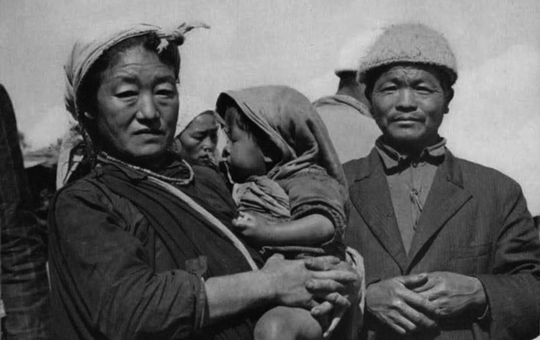Asian Section

Vol. XXII / No. 1
By: Carleton S. Coon
Faces of Asia
This communication is one result of a trip around the world taken by Mrs. Coon and myself in the fall, […]
View Article
Vol. XVIII / No. 3
By: Schuyler Cammann
Carvings in Walrus Ivory
When anyone mentions walrus ivory, we immediately think of small Eskimo carvings from the northernmost parts of the world. The […]
View Article
Vol. XVII / No. 3
By: Schuyler Cammann
II. Brief Catalogue of the Letcher Collection
A. MING BADGES Circular medallion from the robe of a Ming Emperor, showing a powerful winged dragon (ying) pursuing its […]
View Article
Vol. XVII / No. 3
By: Schuyler Cammann
I. Chinese Mandarin Squares
INTRODUCTION The Chinese were the first people in the world to use silk, and the finest products of Chinese weaving […]
View Article
Vol. XVI / No. 3
By: Louis E. Stern
Louis E. Stern: Collector
Pottery of the 15th century A.D. from Lago de Ajudante, Brazil, interested Mr. Stern. I was attracted by the grace […]
View Article
Vol. XV / No. 4
By: S. V. R. C.
The Story of Hornbill Ivory
The strange substance called “hornbill ivory” was formerly an important commodity in Asiatic trade, and it was extensively carved, especially […]
View Article
Vol. XIV / No. 3
By: C.-J. H.
Warp and Woof
WARP AND WOOF, the University Museum’s current exhibit of historic and contemporary textiles, has a double aim: to spread before […]
View Article
Vol. XIV / No. 2
By: Schuyler Cammann
A Prince of the Lama Church: Glimpses of the Lama Religion in Tibet and Mongolia
Our brief glimpse at the more popular aspects of Tibetan Buddhism may have made it seem a very simple faith. […]
View Article
Vol. XIV / No. 2
By: Schuyler Cammann
Acquiring Merit in Lama Lands: Glimpses of the Lama Religion in Tibet and Mongolia
On a series of trips through the Tibetan borderlands of West China and Northern India, some years ago, and in […]
View Article

